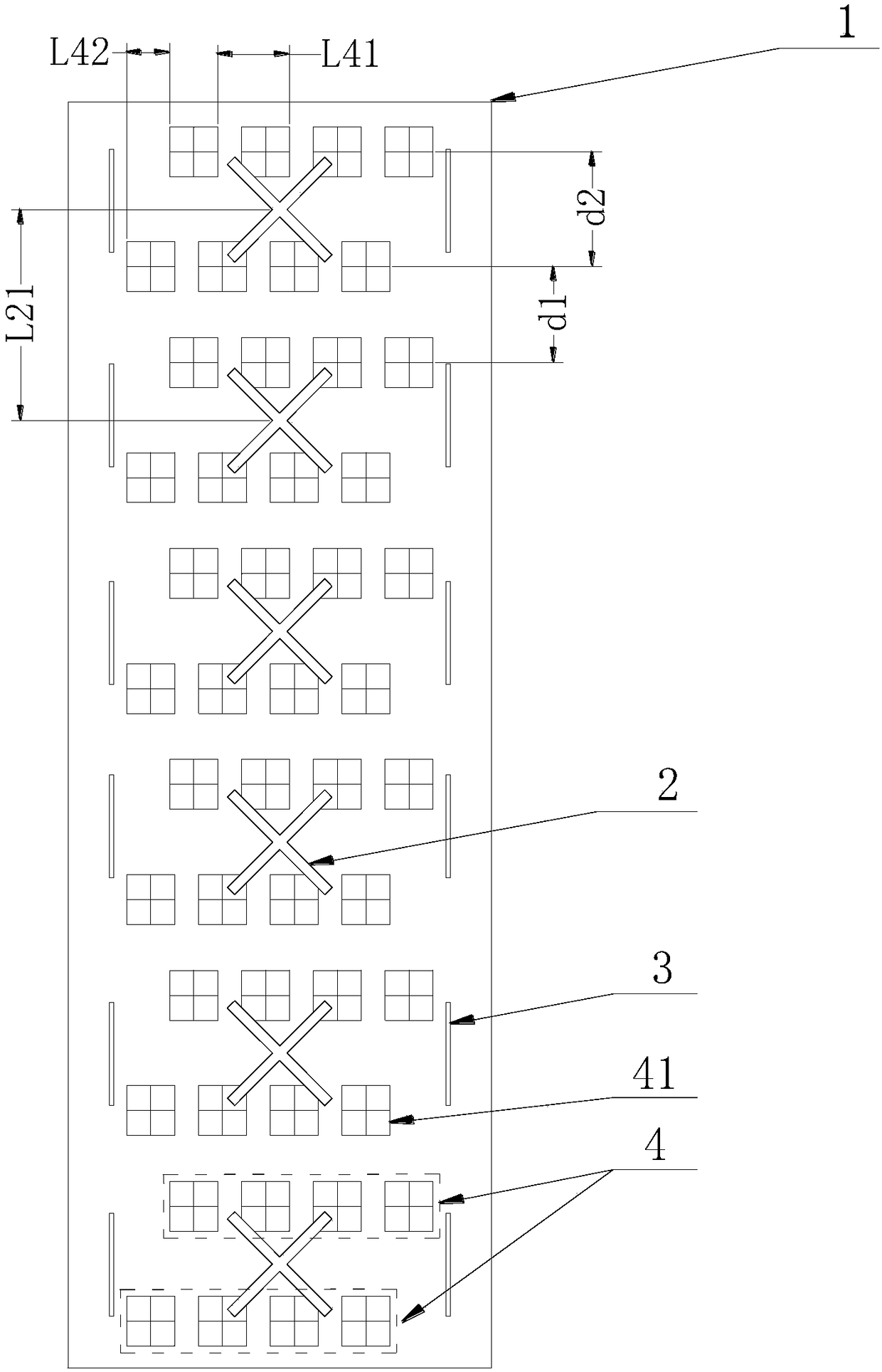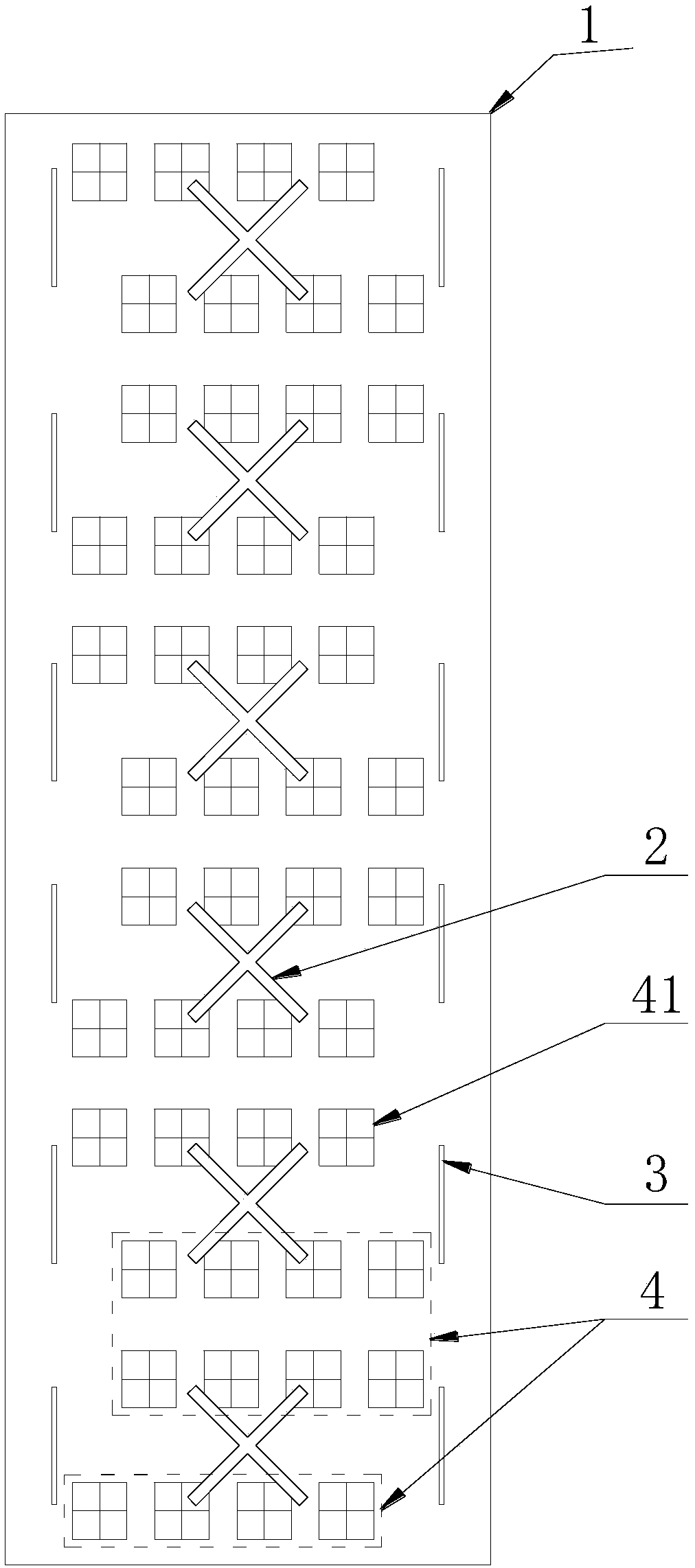Hybrid multibeam antenna
A multi-beam antenna and beam technology, which is applied to antennas, antenna arrays, and antenna arrays that are powered independently, can solve the problems of large volume, wide antenna width, and insufficient capacity, so as to improve network capacity, reduce interference, and solve insufficient capacity. problem effect
- Summary
- Abstract
- Description
- Claims
- Application Information
AI Technical Summary
Problems solved by technology
Method used
Image
Examples
Embodiment 1
[0026] The hybrid multi-beam antenna in this embodiment works in two wide frequency bands, low frequency (694-960 MHz) and high frequency (1695-2690 MHz).
[0027] Such as figure 1 As shown, a hybrid multi-beam antenna in this embodiment includes a reflector 1 , and a low-frequency base station antenna array and a high-frequency two-beam antenna array mounted on the reflector 1 . Among them, the low-frequency base station antenna array and the high-frequency two-beam antenna array form the conventional base station single-beam antenna and two-beam antenna respectively, so that the antennas of different systems working in different frequency bands share the reflector and radome, and realize the integration of multiple systems The design is conducive to the miniaturization of the antenna and saves installation space.
[0028] Among them, the low-frequency base station antenna array and the high-frequency two-beam antenna array are nested with each other, and the low-frequency b...
Embodiment 2
[0036] The arrangement of the low-frequency base station antenna array in a hybrid multi-beam antenna in this embodiment is the same as that in Embodiment 1; the high-frequency two-beam antenna array is composed of seven high-frequency radiation unit subarrays 4, and adjacent high-frequency Radiation unit sub-arrays 4 are arranged in a staggered horizontal direction; the first and last high-frequency radiation unit sub-arrays 4 are each composed of a row of high-frequency radiation units 41, and the middle high-frequency radiation unit sub-arrays 4 are each composed of two rows of high-frequency radiation units 41 Composition, two rows of high-frequency radiation units 41 are arranged without offset in the horizontal direction. see details figure 2 . The column spacing of the high-frequency radiation unit 41 in the same row is the same as that in the first embodiment, the staggered spacing of the adjacent high-frequency radiation unit sub-arrays 4 is the same as that in the ...
Embodiment 3
[0038] The arrangement of the high-frequency two-beam antenna array in a hybrid multi-beam antenna in this embodiment is the same as that in Embodiment 2; the low-frequency base station antenna array is formed by six low-frequency radiation units arranged in an S shape, and two adjacent low-frequency radiation The horizontal offset distance between units is L22, which is about one-sixth of the low-frequency central wavelength. For details, see image 3 , the vertical distance between two adjacent low-frequency radiation units is the same as that in Embodiment 2.
PUM
 Login to View More
Login to View More Abstract
Description
Claims
Application Information
 Login to View More
Login to View More - R&D
- Intellectual Property
- Life Sciences
- Materials
- Tech Scout
- Unparalleled Data Quality
- Higher Quality Content
- 60% Fewer Hallucinations
Browse by: Latest US Patents, China's latest patents, Technical Efficacy Thesaurus, Application Domain, Technology Topic, Popular Technical Reports.
© 2025 PatSnap. All rights reserved.Legal|Privacy policy|Modern Slavery Act Transparency Statement|Sitemap|About US| Contact US: help@patsnap.com



